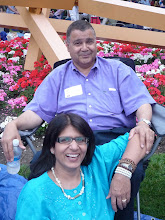My visit three weeks ago to the city, which I will call home for two years, triggered the lifting of a cloud, unbeknown to my conscious self. This sense of freedom opened an opportunity to see new places in the country and I tapped into it to travel and visit cities during the last two weekends.
Albeit small, Macedonia is varied and diverse and as I was travelling alone, it was both challenging and invigorating to take these two trips. Of course along the way and at my destinations, I met fellow volunteers and their host families, experiencing this variety and diversity in lifestyle as well as the topography of these cities.
Skopje, the capital is located in the valley of the River Vardar, which is a visitor itself, coming from the mountains without Macedonia in the northwest and flowing into its southern neighbor before reaching the sea.
The first day I travelled on a morning train, reaching Skopje when the shops were still shuttered and the city had a drowsy, mellow look. The central city plaza, on the south bank of the river and its well-known landmark – the Stone Bridge is a short 5-minute walk from the new train/bus station. Small roads radiate south of the plaza and the kilometer long wide pedestrian walkway all the way to the old train station (now a museum) is one of them. This is an outdoor living museum is flanked by upscale shopping reminding me of city centers in paces as diverse as Barcelona and Glasgow. The memorial honoring Mother Teresa, a Skopje born philanthropist revered in Calcutta where she worked with the poorest of the poor for the greater part of the 20th century, as well as works of newer artists and their works are scattered on both sides of the walkway.
From Skopje the river Vardar first flows though a wide valley before it cuts through another range of smaller mountains, among which is located the city of Veles. One and a half hours later by train, I was in Veles. Originally built along the rocky gorge of the river and now spread farther upstream to the wider bank. The main city center was a modern city with straight lines and touch of flowerbeds and trees, favored by city planners the world over. The bazaar spreads itself across the eastern bank of the river near the bus station. The narrow streets from the Turkish era full of charming, neatly organized and well maintained picturesque houses rise steeply up behind the bazaar. Walking along these winding streets opens unexpected vistas of the town below and across the valley. Sveti Pantelemon, one of the larger churches in Veles is built high above the town on the west bank. Nestled among the narrow streets and homes on this side was a remodeled mosque with the original stone of the minaret visible. Probably built in the early 13 century.
I reached my next and final destination for the weekend by bus, crossing a wide plain covered with farmland. As soon as we came near another much smaller mountain range, not more than ½ hour by bus, I was in Sveti Nikole, named after its patron saint. This city is much smaller than Veles yet urban and sophisticated. The center and the nearby bazaar charmed me. I stayed it what I presume was a newer part of the town as the houses were neatly laid out in a geometric grid as much as a hilly topography will allow. The perimeter of the garden was enclosed with fences, some stone & some brick unlike many homes back home where the green lawns between the homes flow into each other.
The next weekend, I made my way to another city, Kratovo. Whereas the city itself was a collection of tightly clustered homes ranging in age and upkeep and also built on the banks of a narrow river gorge, the surrounding hills captured my imagination. I hiked with a friend for the major part of the day on a trail and discovered the remnants of a camp fire in a meadow. This was a regular hiking trail, where the hikers had packed out their debris! The stream closeby was uncluttered with plastic, quite different from what happened to it as it reached the city. Later that day we celebrated the Slava with her family and stepped out for a night walk to discover a midnight black sky glowing with stars. there was no city light wash to dilute the brilliance. The following morning, before returning to my village we took a trip to a monument known as the ‘Stone Dolls’. Fascinating lava rock formation, which reminded me of the solid ash pillars outside Crater National Park in Oregon. Whereas, those still stand 200 and more feet in a sheltered valley, these older formations have been eroded forming shapes reminiscent of a wedding – a bride and groom at the altar surrounded by guests. The monument was obviously a source of pride for the community as it was well maintained with stone walkways, elegant wooden benches and a area for tourists to picnic - complete with picnic tables and trash collections bins.




